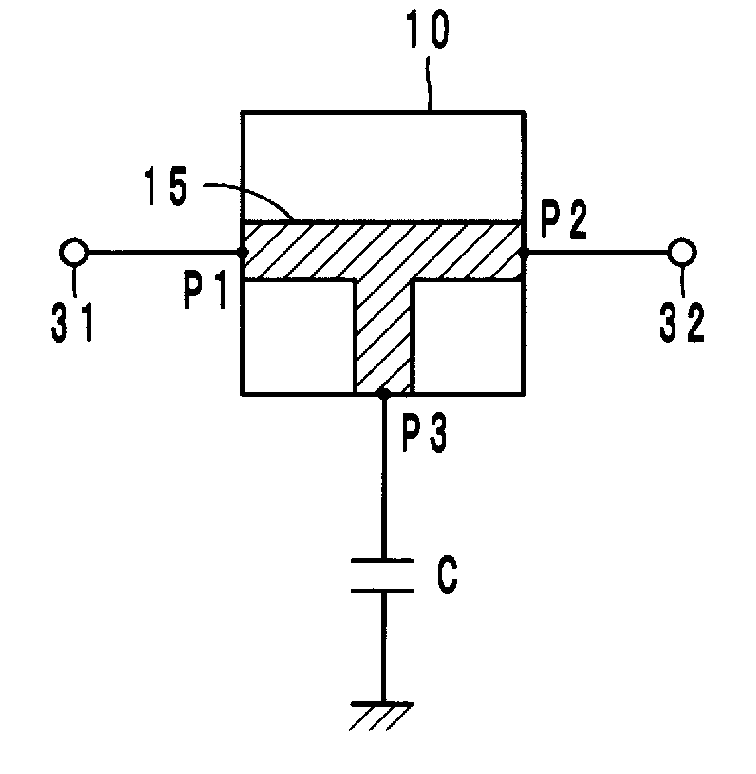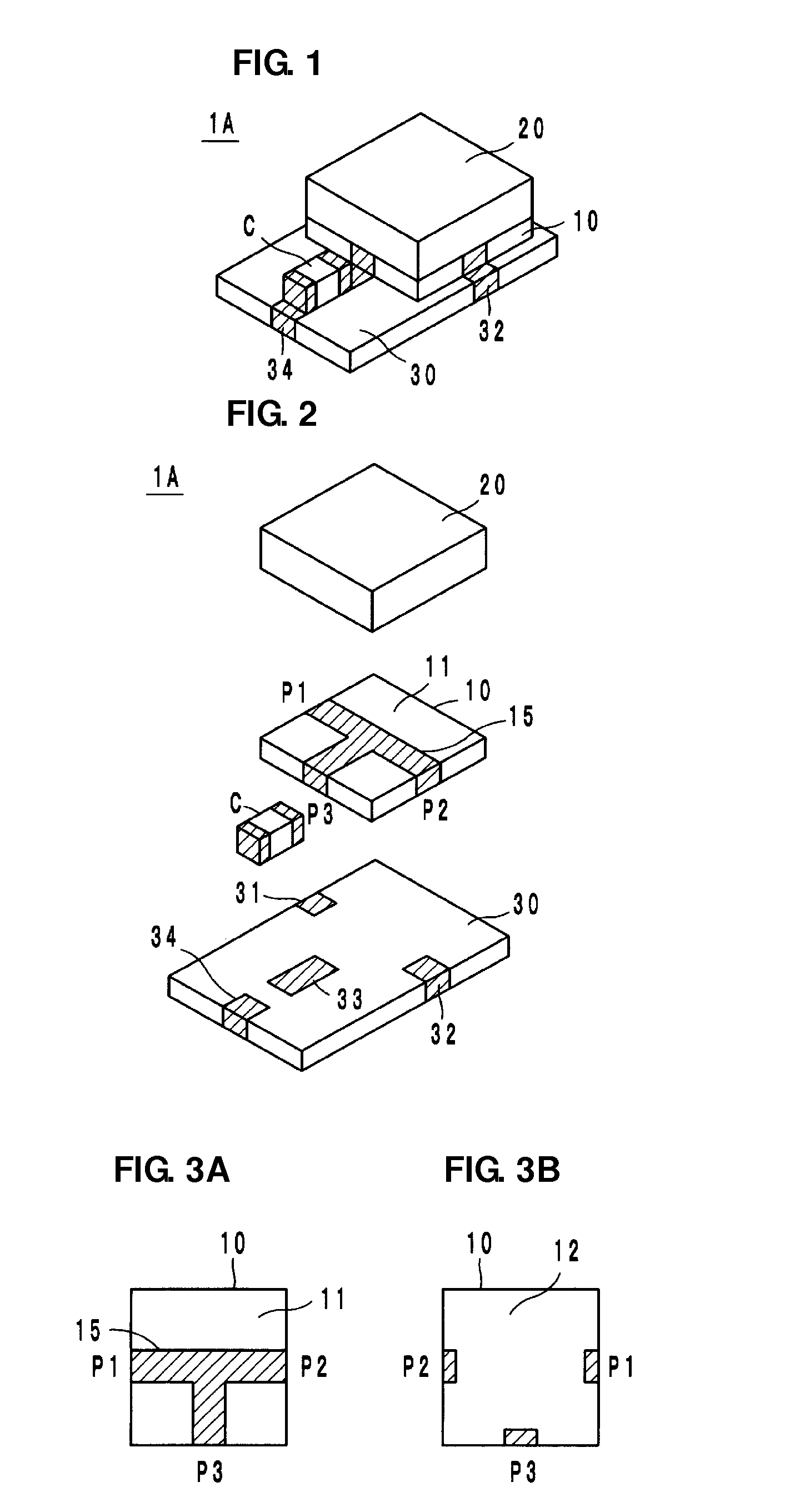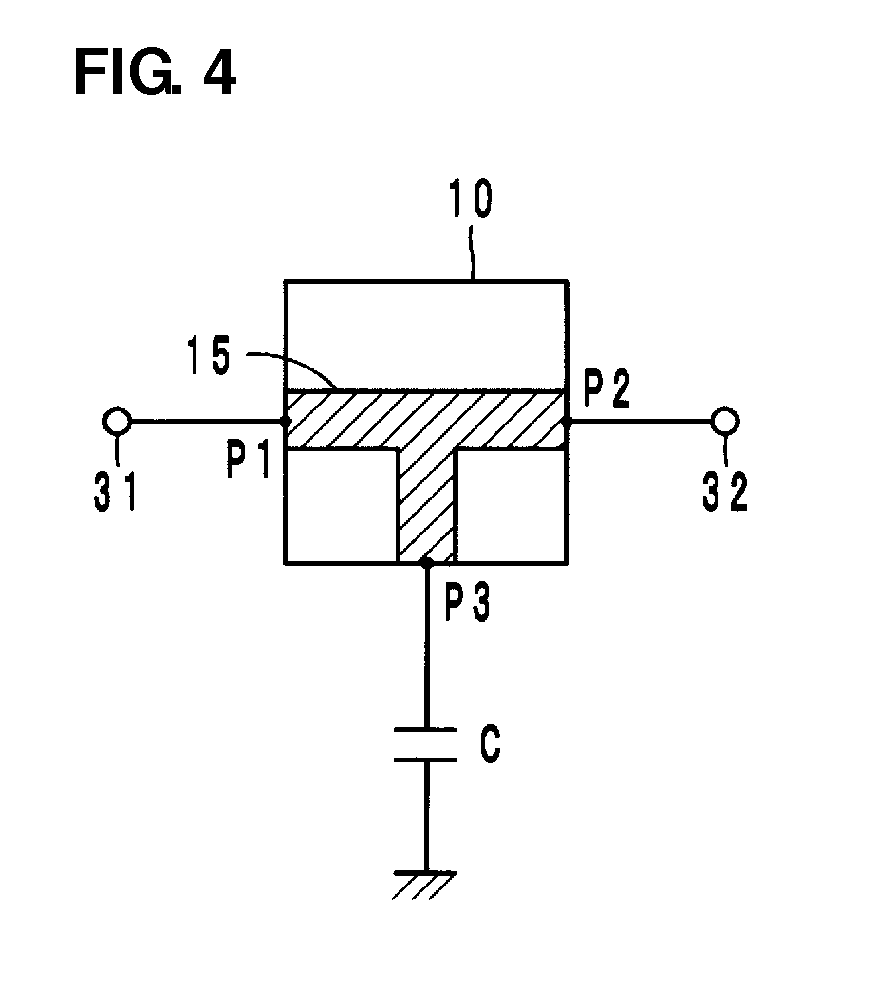Magnetic resonance isolator
- Summary
- Abstract
- Description
- Claims
- Application Information
AI Technical Summary
Benefits of technology
Problems solved by technology
Method used
Image
Examples
first preferred embodiment
[0042]Referring to FIGS. 1 and 2, a magnetic resonance isolator 1A according to a first preferred embodiment of the present invention preferably includes a ferrite member 10, a T-shaped junction conductor 15 which is arranged on a first main surface 11 of the ferrite member 10 and which includes three ports P1, P2, and P3, a permanent magnet 20 that applies a direct current magnetic field to the ferrite member 10, a capacitor C as a reactance element, and a mounting substrate 30.
[0043]The junction conductor 15 is preferably a thin film formed by conductive metal evaporation or a thick film formed by applying conductive paste and baking. Referring to FIGS. 3A, 3B, and 4, a main line arranged between the first port P1 and the second port P2 facing each other in a line, among the three ports P1, P2, and P3 of the junction conductor 15, preferably has a length less than or equal to a quarter wavelength so as not to resonate. A sub-line branching from the main line on the first main surf...
second preferred embodiment
[0049]Referring to FIG. 8B, in a magnetic resonance isolator 1B according to a second preferred embodiment of the present invention, a ground conductor 16 is provided on a second main surface 12 of the ferrite member 10 and a relay terminal electrode 35 to be connected to the ground conductor 16 is provided on the mounting substrate 30. The rest of the configuration is preferably similar to that of the first preferred embodiment. Thus, the second preferred embodiment produces operations and advantages which are similar to those of the first preferred embodiment.
[0050]With regard to the magnetic resonance isolator 1B according to the second preferred embodiment, the input return loss is illustrated in FIG. 10A, the isolation is illustrated in FIG. 10B, the insertion loss is illustrated in FIG. 10C, and the output return loss is illustrated in FIG. 10D. The saturation magnetization is preferably about 100 mT and the capacitance of the capacitor C is preferably about 4 pF, for example....
third preferred embodiment
[0051]In a magnetic resonance isolator 1C according to a third preferred embodiment of the present invention, the end of the sub-line branching from the main line of the junction conductor 15 on the first main surface 11 preferably includes an opposing conductor 17 (refer to FIG. 13B) which extends along the second main surface 12 in a direction perpendicular or substantially perpendicular to the main line. The end of the opposing conductor 17 defines the third port P3, which is connected to the relay terminal electrode 33. The capacitor C is connected between the relay terminal electrode 33 and the ground electrode 34. In the third preferred embodiment, the rest of the configuration is preferably similar to that of the first preferred embodiment. Thus, the third preferred embodiment produces operations and advantages which are similar to those of the first preferred embodiment.
[0052]With regard to the magnetic resonance isolator 1C according to the third preferred embodiment, the i...
PUM
 Login to View More
Login to View More Abstract
Description
Claims
Application Information
 Login to View More
Login to View More - R&D
- Intellectual Property
- Life Sciences
- Materials
- Tech Scout
- Unparalleled Data Quality
- Higher Quality Content
- 60% Fewer Hallucinations
Browse by: Latest US Patents, China's latest patents, Technical Efficacy Thesaurus, Application Domain, Technology Topic, Popular Technical Reports.
© 2025 PatSnap. All rights reserved.Legal|Privacy policy|Modern Slavery Act Transparency Statement|Sitemap|About US| Contact US: help@patsnap.com



